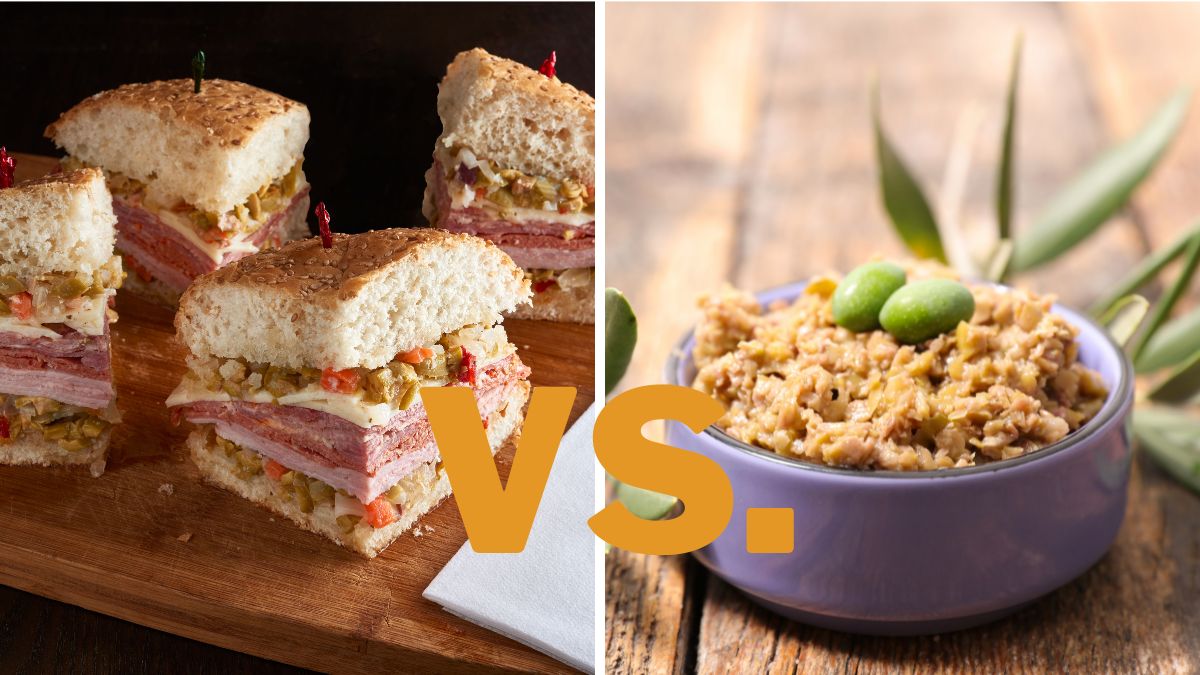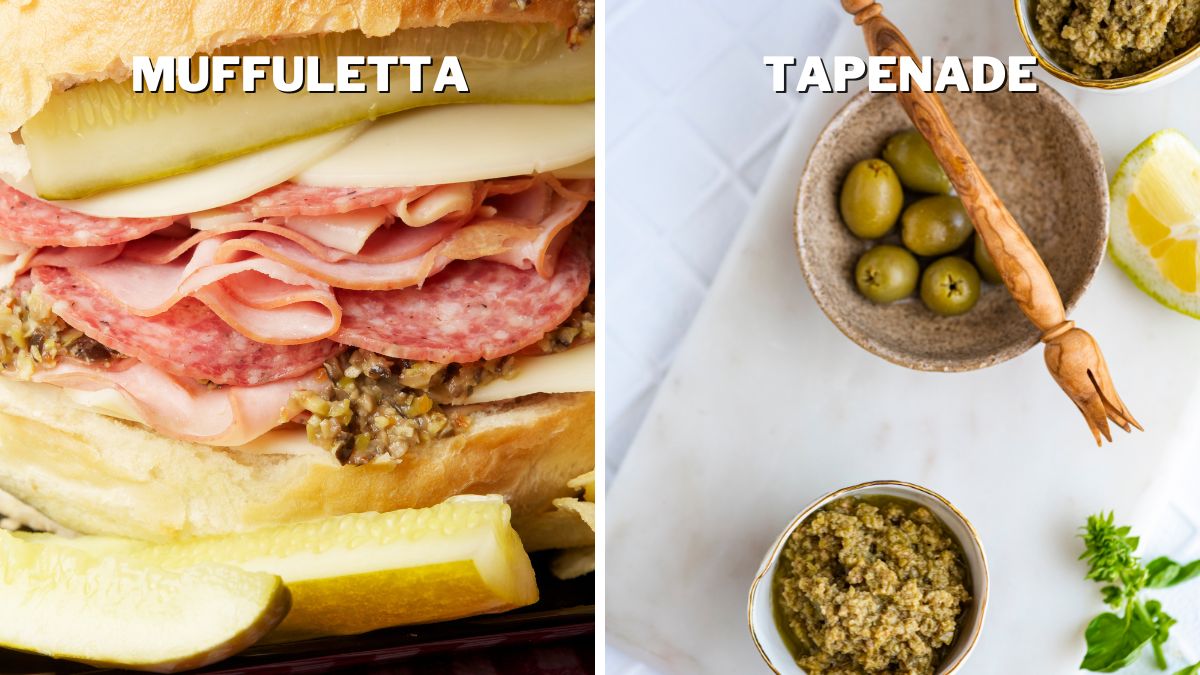Muffuletta vs. Tapenade: Differences & Uses

Have you ever been at a loss when someone asks you to choose between muffuletta and tapenade? It’s understandable – they are both delicious meals with a modest Mediterranean pedigree. But don’t be mistaken — they’re far from one and the same. So, I would never use them in the same way, and neither should you. So, what is the difference between muffuletta and tapenade?
Muffuletta is a round Sicilian bread stuffed with layers of cold cuts and cheeses. It includes salami, cheese, and olive salad. Tapenade is a spread made from puréed olives, capers, anchovies, garlic, and sometimes herbs. While muffuletta is salty, tapenade offers sweet and sour notes.
In this article, I’ll tackle the great debate between muffuletta and tapenade. So grab a snack or two, and join me to explore these two classic Mediterranean specialties in-depth.
Ingredients and Preparation
When it comes to muffuletta vs. tapenade, the first difference lies in their ingredients. The olive salad is what makes the muffuletta sandwich special – the recipe often includes green olives, black olives, celery, carrots, peppers, capers in oil or vinegar, onions, oregano for seasoning, and extra virgin olive oil as the base.
The flavors all meld together in the finished mix to give the sandwich its unique taste. All you need before serving is to warm up the bread and slap on some sliced tomatoes!
Tapenade is made from black or green olives, olive oil, capers, anchovies, and some herbs. Of course, there are variations to this depending on your recipe, but these are generally the most common ingredients for each dish.
The second difference between muffuletta and tapenade is in their preparation. The preparation of muffuletta starts with spreading the olive salad on the cut bread, then adding several types of salami, ham or sausages, some cheese, and that’s it! I love making it at home!
Tapenade is usually ground up with a pestle and mortar or using a food processor to create a paste-like consistency. This makes it perfect for spreading across crostini or crackers.
Appearance and Taste
The differences between muffuletta and tapenade are pretty stark regarding appearance and taste. I’ll start with muffuletta. It is a round, somewhat flat sandwich with layers of cured meats, cheeses, and olive salad – all spread on dense Italian bread.
The meat is usually salami, ham, or mortadella, while cheese can be provolone or mozzarella. The olive salad offers a combination of ingredients that gives the muffuletta a salty taste and a crunchy texture.
Tapenade, on the other hand, is an intensely flavorful paste made by blending together black olives with capers, anchovies, garlic, olive oil, and herbs such as thyme or oregano. The result is an intense flavor that has hints of sweet and sour notes, along with savory undertones.
Unlike many spreads that are smooth in texture, tapenade has a bit of texture from the chopped olives and capers that gives it a distinctive look when served in a bowl or scooped onto crackers.
Nutrition

It’s also important to consider the nutritional differences between muffuletta and tapenade. Though both are made with healthy, fresh ingredients, their nutritional value can vary depending on the ingredients used.
Muffuletta typically contains hearty ingredients such as salami, ham, cheese, and olives. These ingredients provide substantial amounts of protein and fats and are high in calories. Tapenade, on the other hand, is typically much lower in calories and is usually made with heart-healthy ingredients such as olives, capers, and herbs. [1]
If you’re looking for a lighter dish with less fat and fewer calories than muffuletta, then tapenade might be a better option for you. However, if you’re looking for a heartier meal that is more satisfying to your taste buds, then muffuletta is probably the way to go. [2]
Uses
Muffuletta is best enjoyed cold, and it is usually big so that many people can enjoy it as a main dish.
On the other hand, the tapenade is a bit more versatile in that you can enjoy it warm or cold. It pairs deliciously with tartines, stews, fish dishes, and hard cheeses like cheddar and parmesan. You can even use it as a filling for the chicken.
One thing is for sure: muffuletta and tapenade both offer delicious options that will tantalize your taste buds.
Popularity
When it comes to popularity, muffuletta and tapenade have very different stories. Muffuletta is more entrenched in its Italian roots and has been widely known since the early 1900s. It’s become a popular sandwich variety with people from all backgrounds. As such, you can find it in restaurants, hardcore Italian delis, and even in grocery stores across the United States.
On the other hand, tapenade is still relatively unknown globally, even though it has been around for centuries. It originated in Provence, France, and is typically served as an appetizer or condiment with bread and olives.
Tapenade, while available at specialty stores around the US, is still considered somewhat of an acquired taste since its salty anchovy-olive flavor can be a bit off-putting to some people.
So when it comes to popularity, muffuletta takes the crown hands down due to its widespread availability and wide appeal among many different palates. Tapenade remains a specialty item that has yet to gain mainstream acceptance but can definitely be appreciated by those who prefer bolder flavors. Still, I like them both — sometimes I make muffuletta myself at home, and instead of the olive salad, I make some tapenade and put it inside. It’s delicious!
